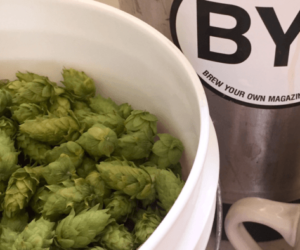Make Your Winemaking Mixes Match
Oil and water just don’t mix. It’s a phrase used to describe incompatibility. There are winemaking equivalents of this. Many physical, chemical, and
biological properties don’t interact well. This can wreak havoc while you are sanitizing, fermenting, or just storing your wine. It’s important to be aware of and avoid these incompatibilities in winemaking.
Chlorine and Corks
Chlorine is great for sanitizing drains, floors, equipment surfaces, and countless other things. Keep in mind, however, that you should never let chlorine touch a cork or a wine that might be corked. It’s important to avoid contact, because an offensive odor called trichloroanisole (TCA) can develop in wine when the molds naturally present in corks (and sometimes even on winery surfaces) come in contact with chlorine.
TCA can be detected by the human nose at minuscule concentrations, and once it’s in wine, there’s no way to get it out. The only way to reduce the chances of getting TCA in your wines is to practice good cork-handling techniques (keeping them clean, dry) and to reduce the amount of chlorine that might come in contact with your musts and wines. Use caution and common sense; re-evaluate your winemaking procedures for their potential to introduce chlorine into your wines. Chlorine bleach and chlorine-containing cleaners and sanitizers shouldn’t be used, for example, to flush out a bottling line or to clean a barrel.
Chlorine and chlorine-containing solutions are fine to use if the chlorine is going to evaporate into the air as chlorine gas or if it will be rinsed out with a ton of water before any wine (and as a result, any cork) touches it. Don’t use corks on your wine? You’re still not safe. Molds in the air and on your winery surfaces can still form TCA and leave you with stinky wine. The only way to avoid this situation is to use your head when using chlorine and to try out some other cleaning and sanitizing options such as TSP, soda ash, acids, and sulfites.
Chlorine and Stainless Steel
Again, chlorine is great for sanitizing stainless steel tanks, drums, and kegs — provided you flush them with lots of water. Chlorine and chlorine-containing products, when used correctly, can be an effective part of your sanitization regimen.
However, chlorine concentrations of more than 200 milligrams per liter pit stainless steel tanks, kegs, instruments, and fittings, damaging them forever. Mixing chlorine and acid (or rinsing chlorine with acid) causes corrosion and is dangerous.
Always look on the label of any chlorine-containing sanitizing solution that you buy (or call the toll-free number, if one is listed on the label) to determine the safety margin of that product.
Chlorine Bleach and Ammonia
Chlorine bleach should never come in contact with ammonia or ammonia-containing cleaning products. When mixed, chlorine bleach and ammonia produce noxious gas, creating a potentially hazardous situation.
If you can’t predict the compatibility of two or more cleaning products, the safest path is not to mix them and to give every surface or item a good rinse with plenty of fresh water before a second solution is applied. For example some winemakers really like the cleaning power of soda ash and citric acid. However, if you mixed them together in a bucket before you attacked a small stainless steel hand press, they would neutralize each other and cause a potentially harmful chemical reaction. To take advantage of the qualities of both, loosen grit and grime with a solution of soda ash and water, rinse well, apply a solution of citric acid and water, and then rinse again.
Aluminum and Wine
Time was when winery fittings were made out of whatever metal was cheap, serviceable, and available. Copper, aluminum, and bronze are just a few of the metals that have been employed by winemakers over the years. Whereas some metals might have their places, especially when tradition dictates, aluminum is certainly not one of them. Fermenting or storing wine in aluminum vessels has been shown to cause a host of problems for winemakers.
At wine pH, the solubility of aluminum into juices and wines is significantly increased. Dissolved aluminum rapidly turns sulfur dioxide into hydrogen sulfide, creating an objectionable odor that ruins wine if it is present in sufficient quantity. At levels of dissolved aluminum exceeding five milligrams per liter, hazes and undesirable changes in flavor, color, and aroma can result. The best way to avoid all of this hassle? Never buy aluminum fittings, vessels, or instruments if there are other options available. For winemaking the more inert a material is, the better.
SO2 and Silicone Bungs
If you’re lucky enough to have a sulfur dioxide gas delivery method for your home winery and you’ve invested in a couple of barrels, take special note of this incompatibility. While gassing one’s barrels is a great way to keep empties free of microorganisms and ready to go for next harvest, never bung up a freshly gassed barrel with just a silicone bung. Sulfur dioxide gas will harden and crack the silicone it contacts, creating a perfect environment for microbes to hide out in as well as completely ruining the resiliency of your bung.
The solution is to keep a protective layer between the bung and the gas inside the barrel. Waxed paper cups, Dixie cups for example, work very well for this purpose. Simply place your bung inside the cup and then put the whole contraption into the barrel as usual. Your barrel still will be closed tightly, but the gas will not damage the bung.
The above suggestions will save time, money, and heartache while increasing the chances that your winemaking — and your wine — will work for you, not against you.


